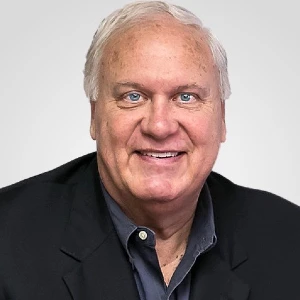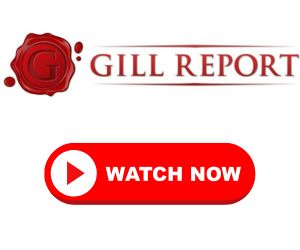By: JC Bowman, TriStar Daily Contributing Education Editor
Public education is at a crossroads, and it seems we’ve inadvertently taken a long detour into the land of disruption. While the buzzwords of the day sound enticing— “transformative” and “revolutionary”— what we really need is a solid dose of innovation. The kind that doesn’t just flip the script but rewrites it with some good, old-fashioned common sense. Educator-led, student-focused, and parent-supported! Too many education policies are mere cut-and-paste jobs from other states.
First, let’s acknowledge the elephant in the room: fewer than half of U.S. students are reading and doing math at grade level.
The NAEP scores have plummeted, with 13-year-olds now performing at their lowest in decades.
Tennessee students are outperforming the national average, making significant gains in fourth and eighth-grade reading and math despite a nationwide decline in scores.
We must provide more support for K-12 students and adopt a more sensible approach to accountability, including testing and evaluation.
However, let’s not sugarcoat it; this isn’t just a statistical hiccup. Nationally, lower-performing students, particularly Black and Hispanic kids, are getting the short end of the educational stick. There’s a lesson here: aligning education with workforce needs, promoting apprenticeships, internships, and career and technical education (CTE) programs can prepare students for the “real world” job market. And we desperately need those skill sets.
Now, let’s talk about the teachers. We’re facing a crisis of epic proportions: teacher shortages, plummeting morale, and an alarming uptick in classroom disruptions. Tennessee is opening the school year with about 1,400 vacancies across the state. A Pew survey reveals that a whopping 74% of U.S. adults are in favor of higher teacher pay. So why are we still dragging our feet?
It’s time to prioritize recruitment and retention of high-quality teachers, which means rethinking how we prepare them. Imagine a world where prospective teachers go through paid internships akin to medical training, especially in high-need areas like special education and STEM. Teacher licensure and certification require significant reform. We need to simplify the process to address inconsistencies and outdated terminology. Removing barriers will improve accessibility.
Teachers are the key.
Overhyped AI can’t replace the genuine human touch that a good teacher provides.
The fundamentals of teaching include key aspects such as a firm grasp of the subject matter, effective teaching strategies, and the ability to create a positive learning environment.
It also involves understanding diverse learners and delivering effective instruction, along with a commitment to continual improvement. Yet we do little to teach and promote these skills.
The curriculum is another battlefield.
We have worked on literacy for a decade, first under Commissioner McQueen and continuing under Commissioner Reynolds.
Mathematics has also been a focus.
Keep the emphasis on research-aligned methods, providing demanding content, and improving civic education to better prepare students for the real world.
The most critical measure of education success is an informed citizen.
School choice is always on the table, but with that comes the responsibility of ensuring accountability and oversight.
Everything gets evaluated.
When it comes to education policy and funding, the landscape is a mixed bag.
Public resistance to abolishing the U.S. Department of Education is telling; it plays a crucial role in data collection and civil rights enforcement.
However, we want our federal tax dollars back; we don’t want additional strings attached to them.
Look for block grants as a solution.
One constant we must safeguard is that schools must be responsive to parents, not philanthropists or special interest groups.
On that front, we have work to do.
We need a less invasive federal education system.
Yet, at the state level, priorities can be wildly inconsistent. Some governors focus on funding, while others overlook declining achievement. Some governors look for the exit ramp. Mental health support is becoming increasingly vital, with states like Alabama and Michigan leading the charge in addressing student well-being.
Funding remains a contentious issue. Relying on local property taxes creates a regressive system that favors affluent districts. Simply pumping more money into the system without addressing the underlying societal problems won’t solve the issues. However, Tennessee’s low per-student funding, sitting at a dismal 47th nationally, only compounds the problem.
School safety and discipline issues are significant factors driving teachers away from the profession. Many teachers cite a lack of student discipline, insufficient administrative support, and a lack of respect, alongside salary and working conditions, as reasons for leaving. Placing students with chronic behavioral problems in regular classrooms further overwhelms teachers and leads to lost instructional time whenever discipline issues arise.
What’s the bottom line? Public education should focus on innovation rather than disruption. It’s important to give states more freedom at the national level and to allow local school districts greater flexibility at the state level. Innovation is constant. Building requires innovation, time, and effort. Disruption causes lasting damage, and destruction is inevitable. Choose wisely.
We must evolve the system through creative solutions, rather than destabilizing it. Disruption, often fueled by excessive regulatory shifts, diverts resources and attention from constructive changes. The challenge lies in balancing bold ideas with stability, ensuring that public schools remain true to their core mission: educating the next generation.
JC Bowman is the executive director of Professional Educators of Tennessee.
















